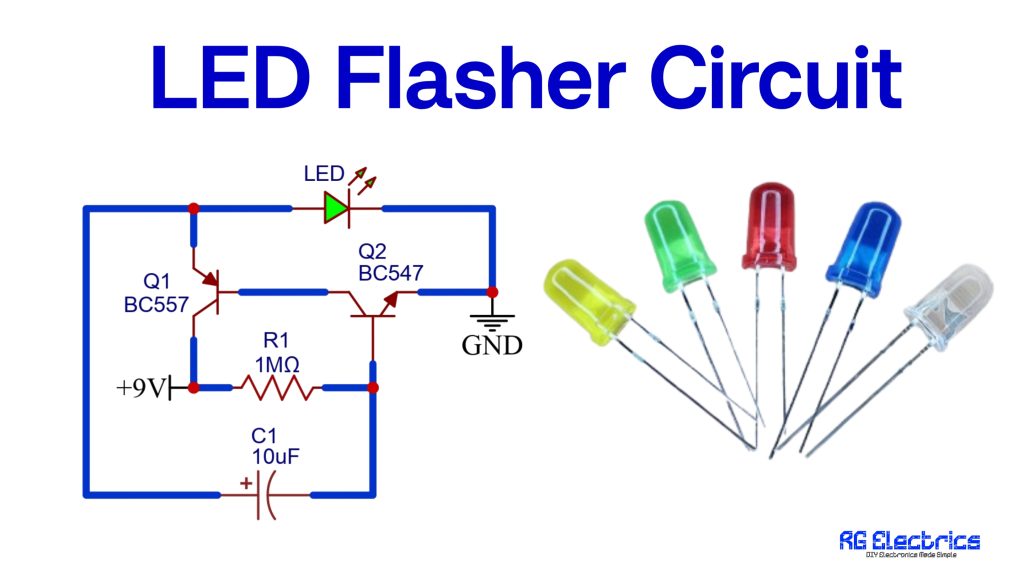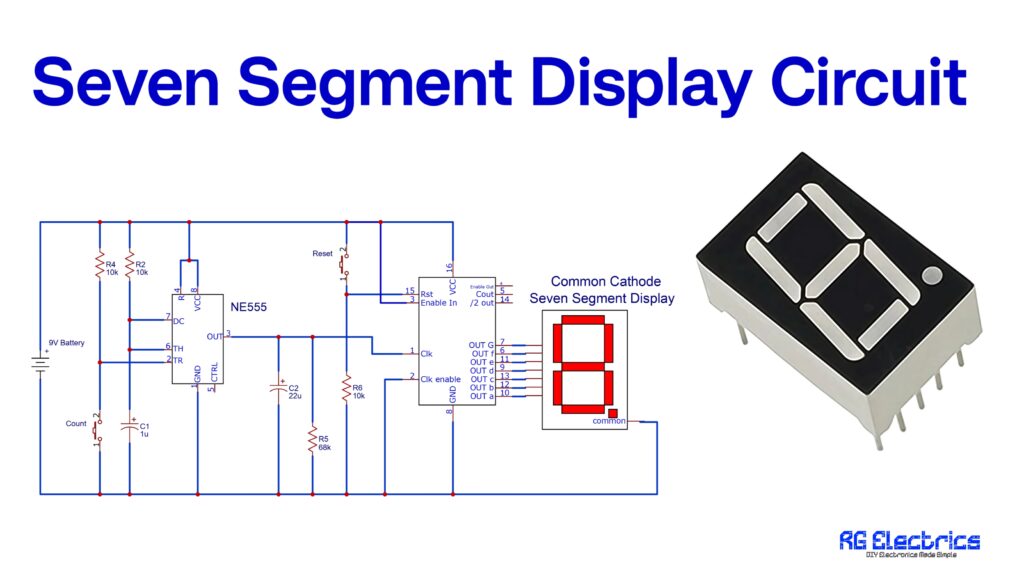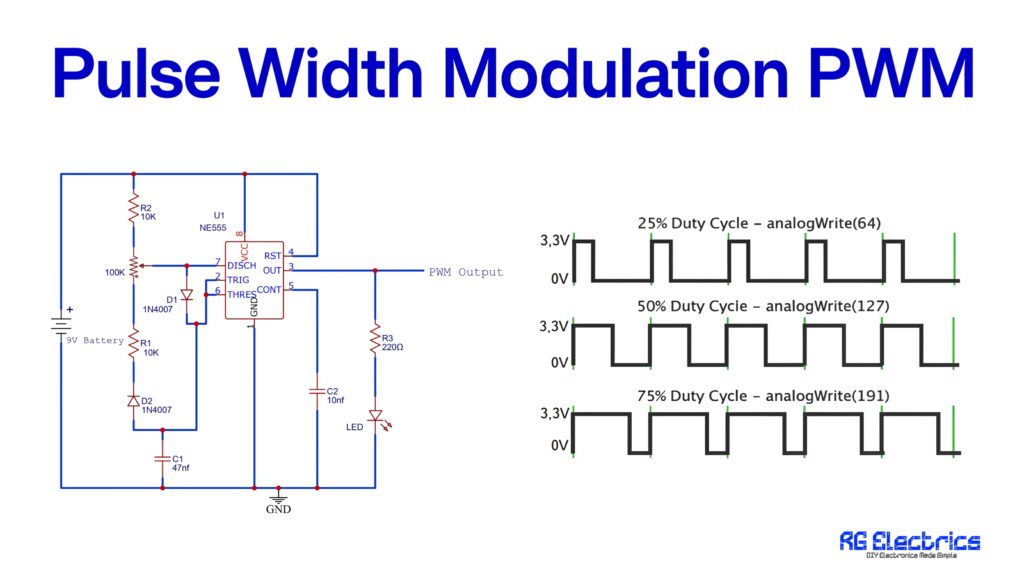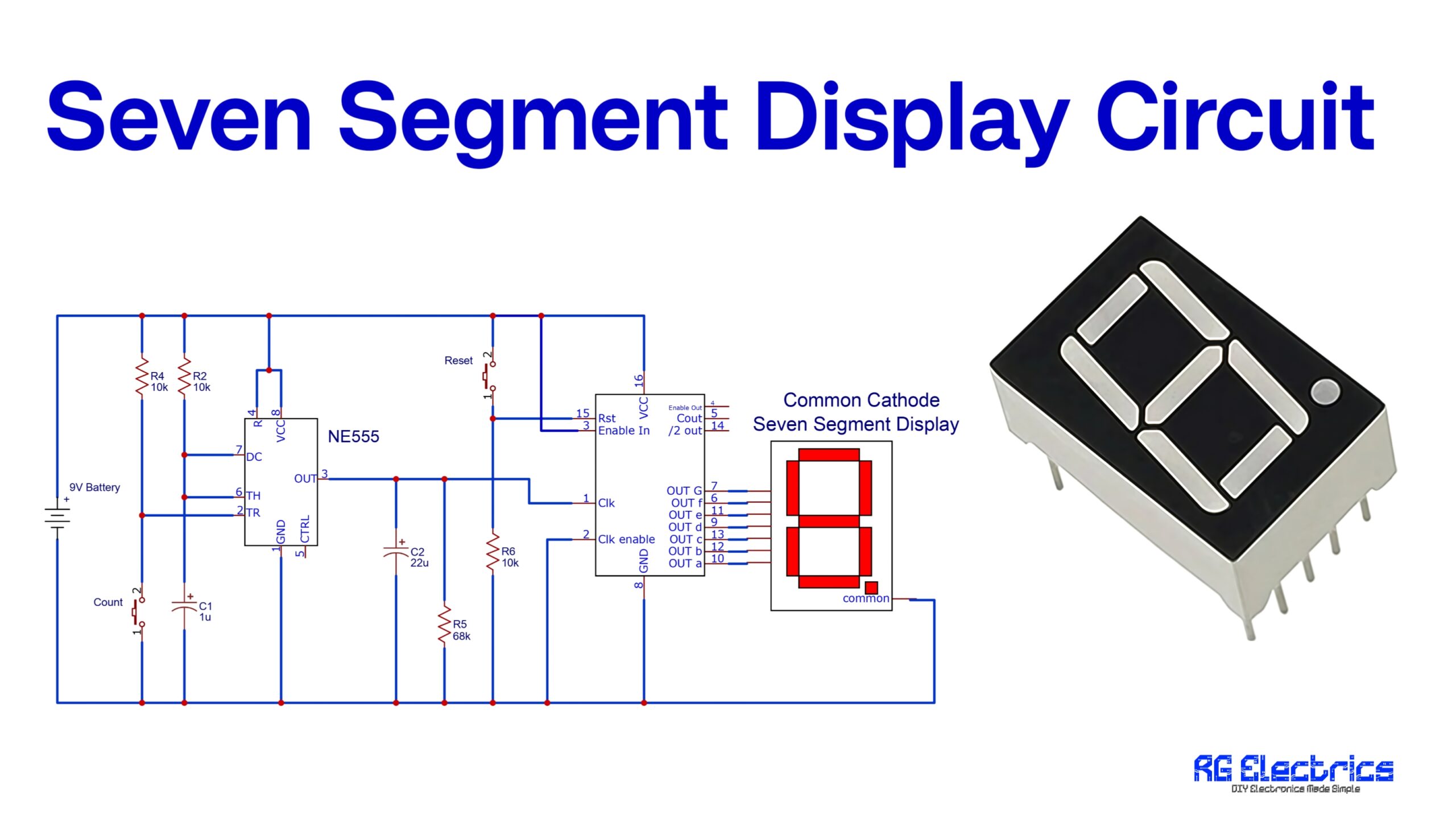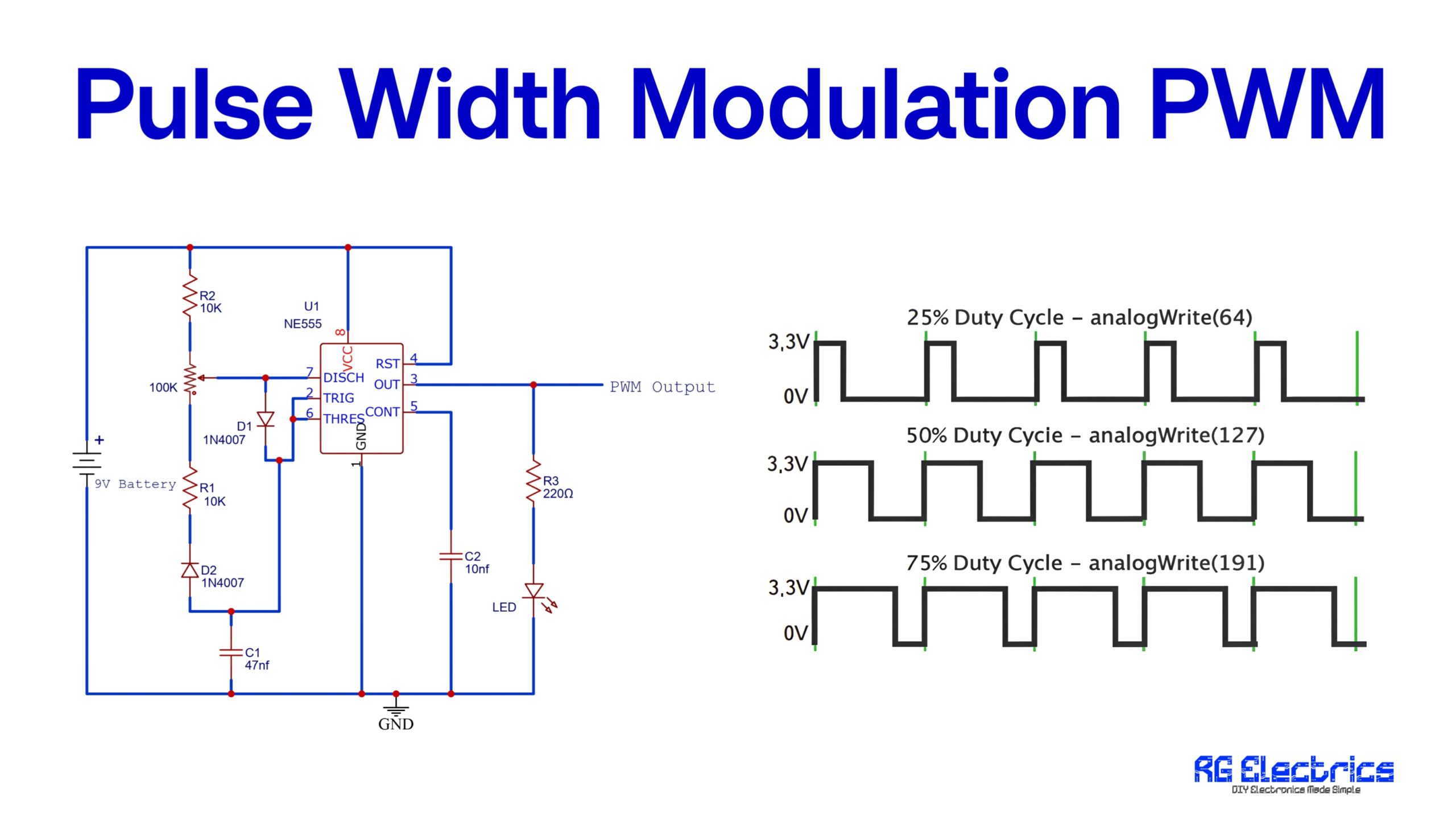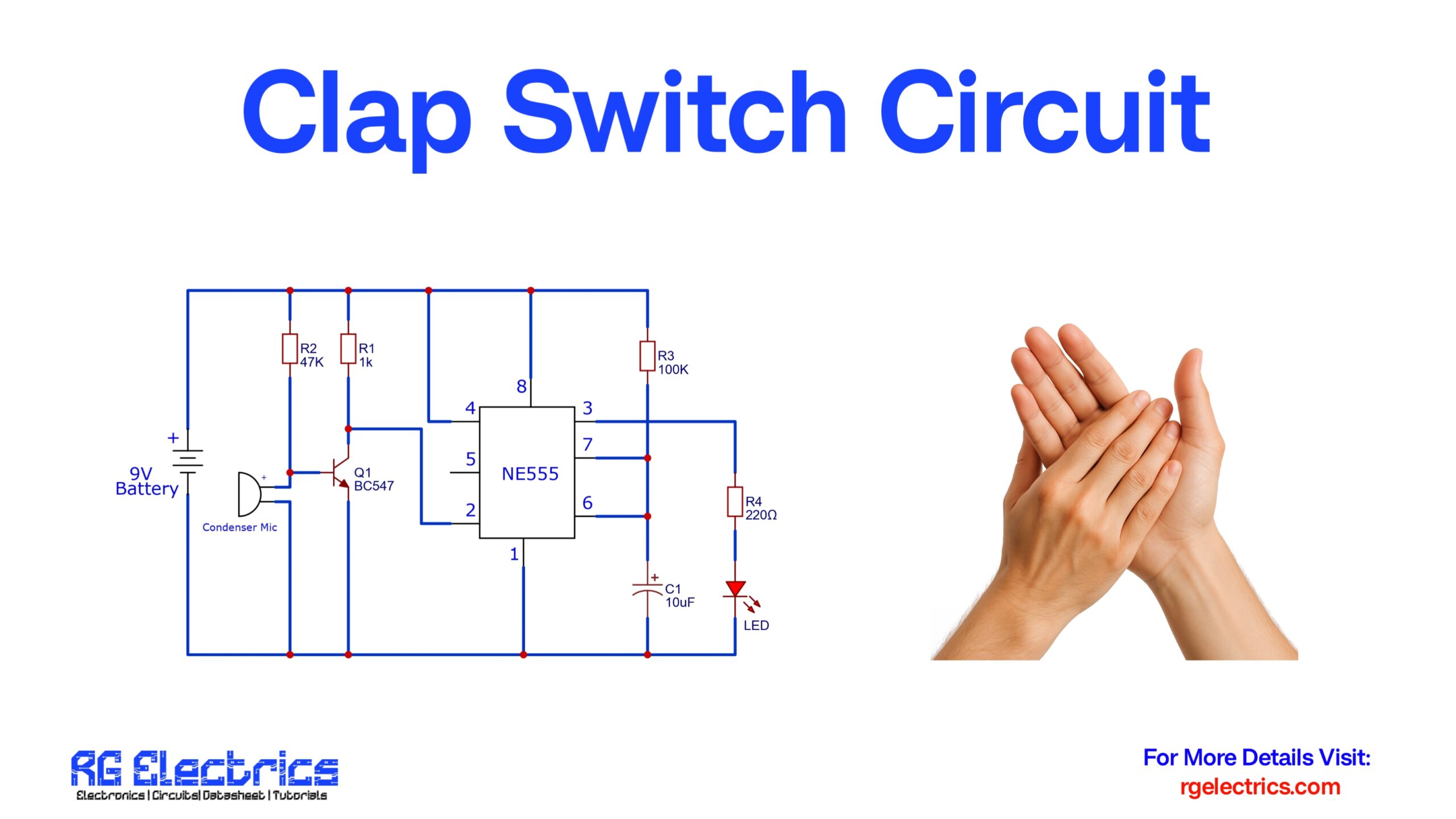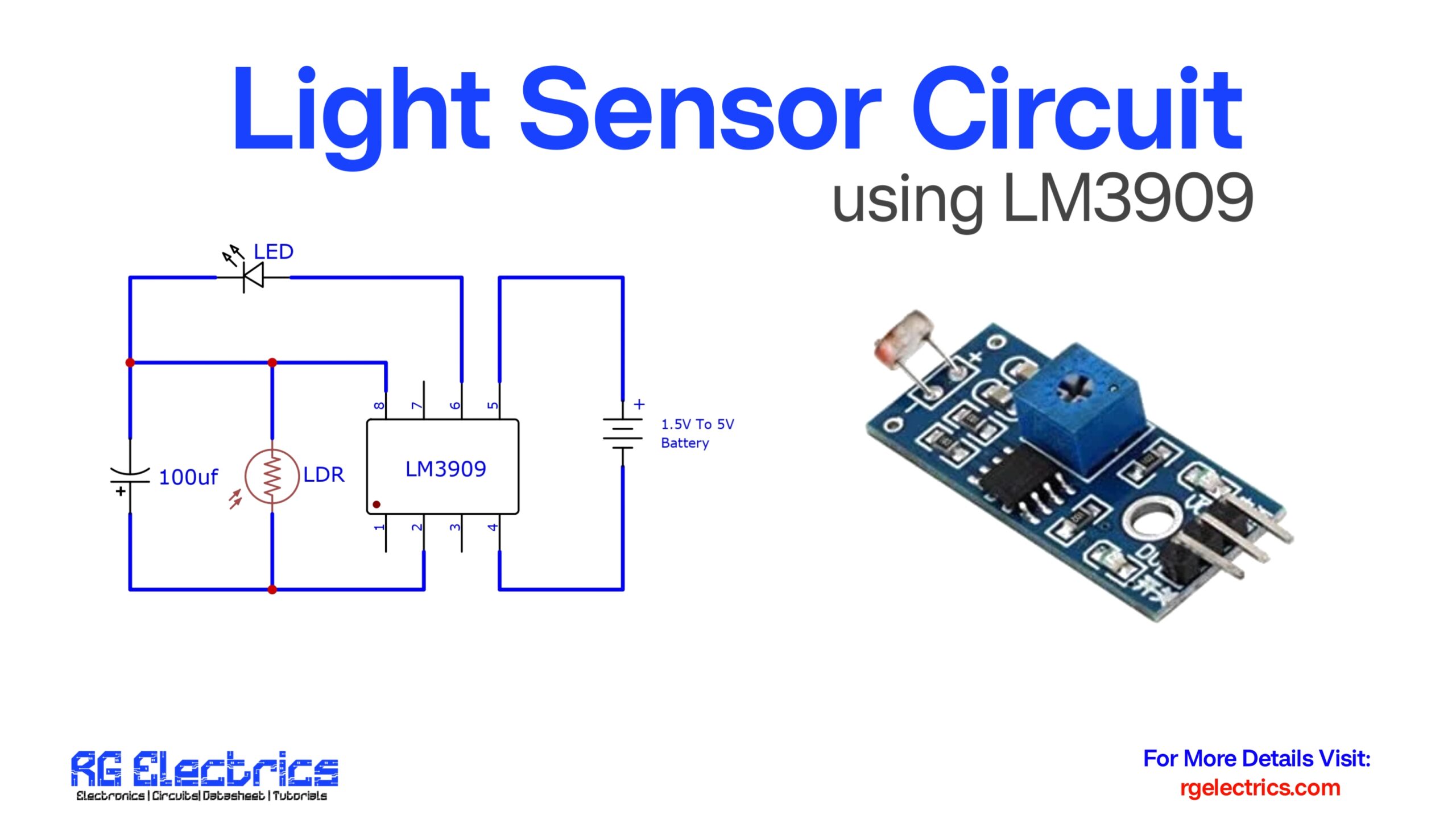Table of Contents
Introduction:
The LM386 is a low-power audio amplifier integrated circuit (IC) designed for use in low-voltage applications, such as portable devices and DIY audio projects. It operates on voltages ranging from 4V to 12V, making it ideal for battery-powered systems. With minimal external components, the LM386 can amplify audio signals to drive small speakers or headphones, delivering up to 0.7W of power.This IC designed to give output gain from 20 to 200 dB. Here the amplifier circuitry amplifies the audio signal this signal fed to the input of the speaker which it convert into sound output. Audio frequency range lies in the frequency range of 20Hz-20KHz.
Components Value:
| S. NO | Components | Value | Quantity |
|---|---|---|---|
| 1. | IC | LM386 | 1 |
| 2. | Resistor | 10ohm, 1.2k | 1,1 |
| 3. | Variable Resistor | 10K | 1 |
| 4. | Capacitor | 1uf, 10uf, 0.1uf | 1,1,1 |
| 5. | Speaker | 8ohm 1W | 1 |
| 6. | Power Supply,Battery | 4v to 12v | – |
About LM386 Ic:
The LM386 is a widely-used, low-power audio amplifier integrated circuit (IC) specifically designed for amplifying low-level audio signals while consuming minimal power. It is highly popular in DIY audio projects, battery-powered applications, and compact audio devices due to its simplicity, efficiency, and versatility. Here’s a more detailed breakdown of the LM386:
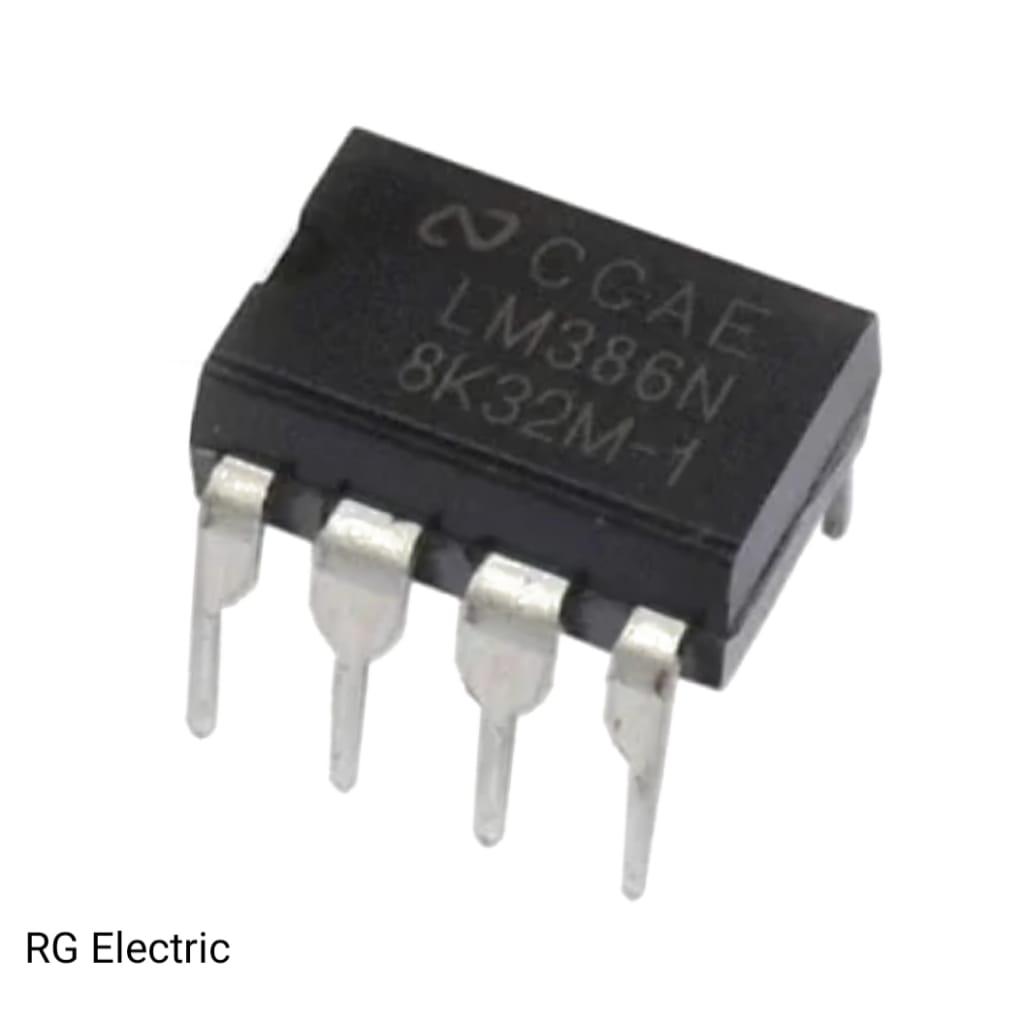
Key Features:
- Low Power Consumption: The LM386 is designed for battery-operated devices, requiring very little power to operate.
- Wide Voltage Range: It operates from 4V to 12V, making it flexible for use with a variety of power sources, such as a 9V battery.
- Adjustable Gain: The IC offers a default gain of 20, but by adding a capacitor between pins 1 and 8, the gain can be increased up to 200. This makes the LM386 suitable for different applications where different amplification levels are needed.
- Minimal External Components: It requires only a few external components for basic operation, simplifying the design and reducing costs. These include capacitors and resistors, depending on the configuration.
- Output Power: The LM386 can output up to 0.7W of power into an 8-ohm speaker with a 9V power supply, which is sufficient for driving small speakers or headphones.
Functional Pins:
The LM386 comes in an 8-pin Dual-Inline Package (DIP), and each pin plays a crucial role:
- Pin 1 & Pin 8 (Gain Control): These pins allow adjustment of the amplifier’s gain. By adding a capacitor between these pins, the gain can be increased.
- Pin 2 (Inverting Input): The inverting input of the amplifier. In most designs, this pin is connected to ground.
- Pin 3 (Non-Inverting Input): This is where the audio signal is fed into the amplifier.
- Pin 4 (Ground): Connected to the circuit’s ground.
- Pin 5 (Output): Provides the amplified audio output signal.
- Pin 6 (Power Supply – Vcc): Connected to the positive supply voltage (between 4V and 12V).
- Pin 7 (Bypass): This pin is used to connect a capacitor to reduce noise and stabilize the amplifier.
Circuit Daigram:
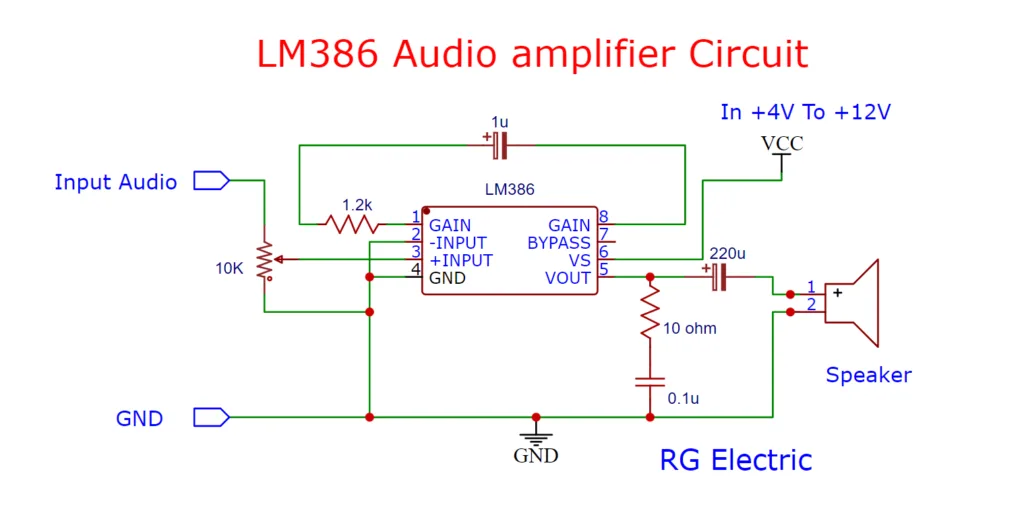
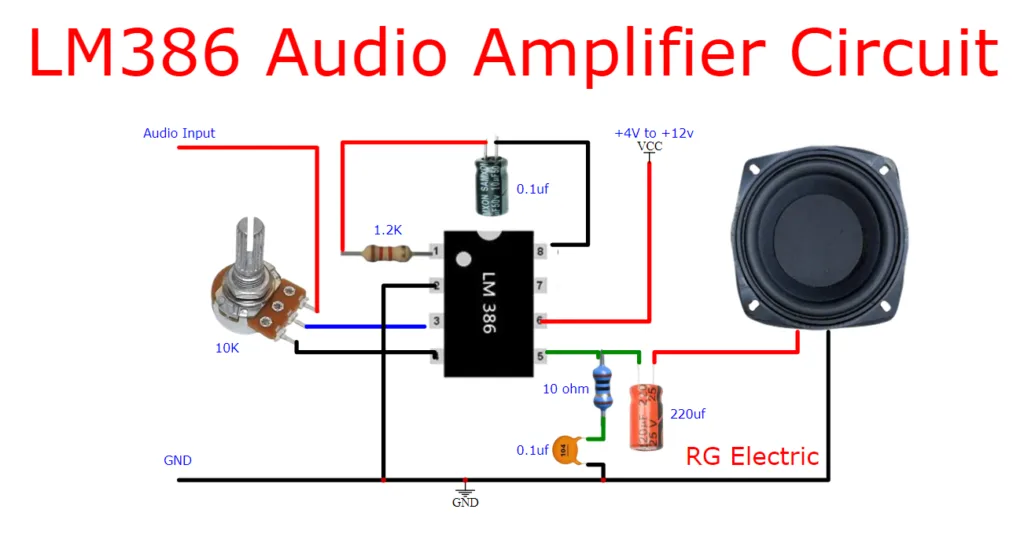
Explanation:
The LM386-based audio amplifier is built around an 8-ohm, one-watt speaker (LS1), four capacitors, and a few other components. A 6V battery is used to power this circuit. Here four electrolytic capacitors are used in this circuit. C1 is connected to the middle terminal of 10K Potentiometer VR1. C2 is connected to pins 1 and 8 of IC1.Pin 5 of IC1 is the output terminal, which is connected to speaker LS1 through C3. C4 is connected to the positive term of the 6V battery and ground. The positive side of 6V is connected to pin 6 of Ic1 and the other side is connected to the ground terminal on pin 4.
The inverting pin 2 of IC1 is connected to ground and the non-inverting pin 3 is connected to the input terminal through VR1.Audio input is fed to CON 1. VR1 is used to control the volume. Switch on S1 and place VR1 in its middle position. You can check the operation of the amplifier by touching the input terminal pin 3 of IC1 and you will hear a noisy sound from the speaker.
Typical Applications:
The LM386 IC is commonly used in a variety of low-power audio applications, due to its simple design, efficiency, and low external component count. Below are some of the primary uses for the LM386 IC:
- Small Audio Amplifiers:
The most common use of the LM386 is in audio amplification for small speakers and headphones. It can be found in portable radios, MP3 player amplifiers, and Bluetooth speakers, where it boosts weak audio signals to drive output devices like speakers or earphones. - DIY Audio Projects:
The LM386 is highly popular in DIY audio projects because of its ease of use and minimal component requirements. Makers and hobbyists use it to build portable amplifiers, desktop speaker systems, or mini amplifiers for home audio setups. - Guitar Amplifiers:
It’s frequently used in guitar practice amplifiers due to its ability to amplify low-level signals from a guitar’s pickups. The IC allows musicians to create small, low-power amps that can be powered by a battery, making it ideal for practicing on the go. - Intercom Systems:
The LM386 is a go-to solution in intercom systems and other low-power communication devices where amplifying audio signals for short-range communication is necessary. - Signal Boosting:
It’s used to boost weak audio signals, such as from a microphone or audio sensors, making it suitable for use in hearing aids and other assistive devices. - Oscillators and Test Equipment:
The LM386 can be configured in oscillator circuits and is used in basic signal generation for testing purposes in electronics labs. - Simple AM Radio Receivers:
The LM386 is sometimes incorporated into AM radio receivers to amplify the demodulated audio signals before they are fed to the speaker. - Toys and Alarms:
It’s used in various toys and alarms to provide simple audio outputs or sound effects. In these circuits, the LM386 amplifies low-power audio signals to produce louder sounds.



